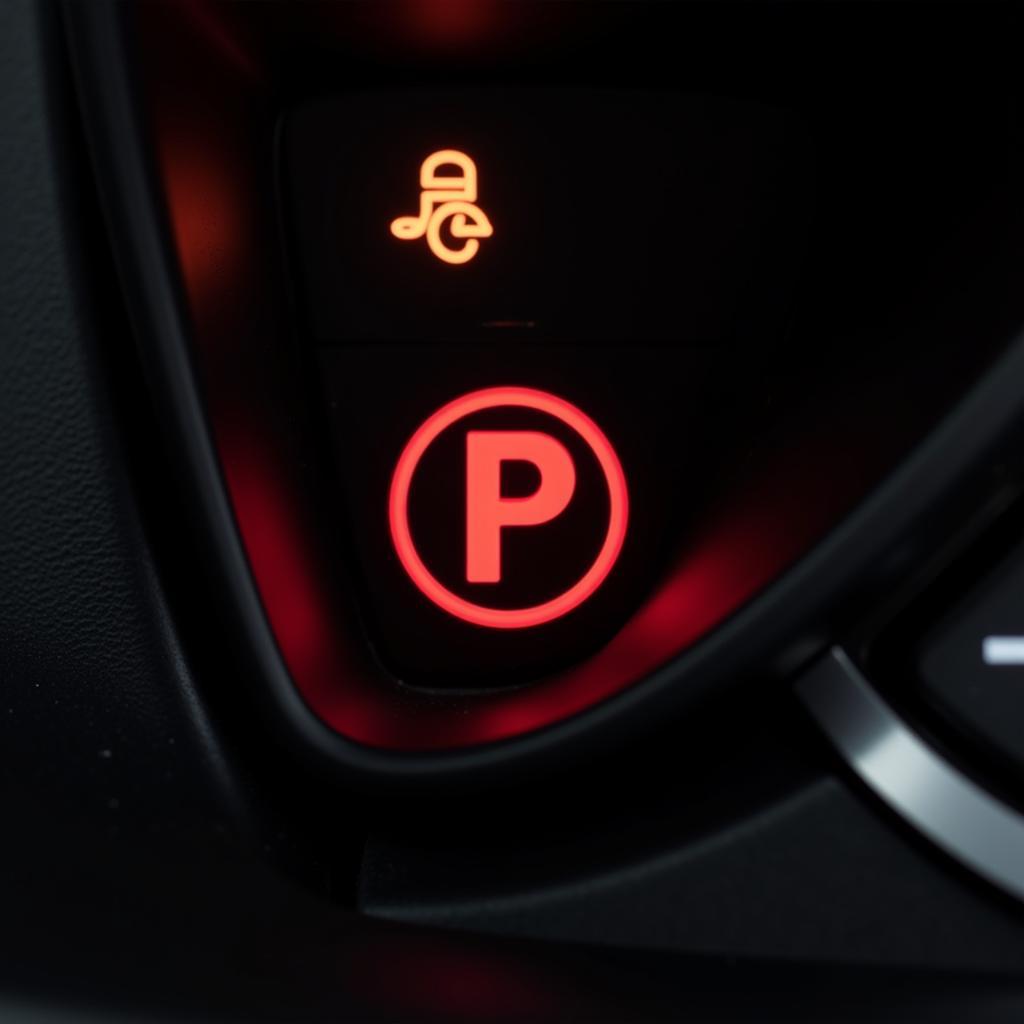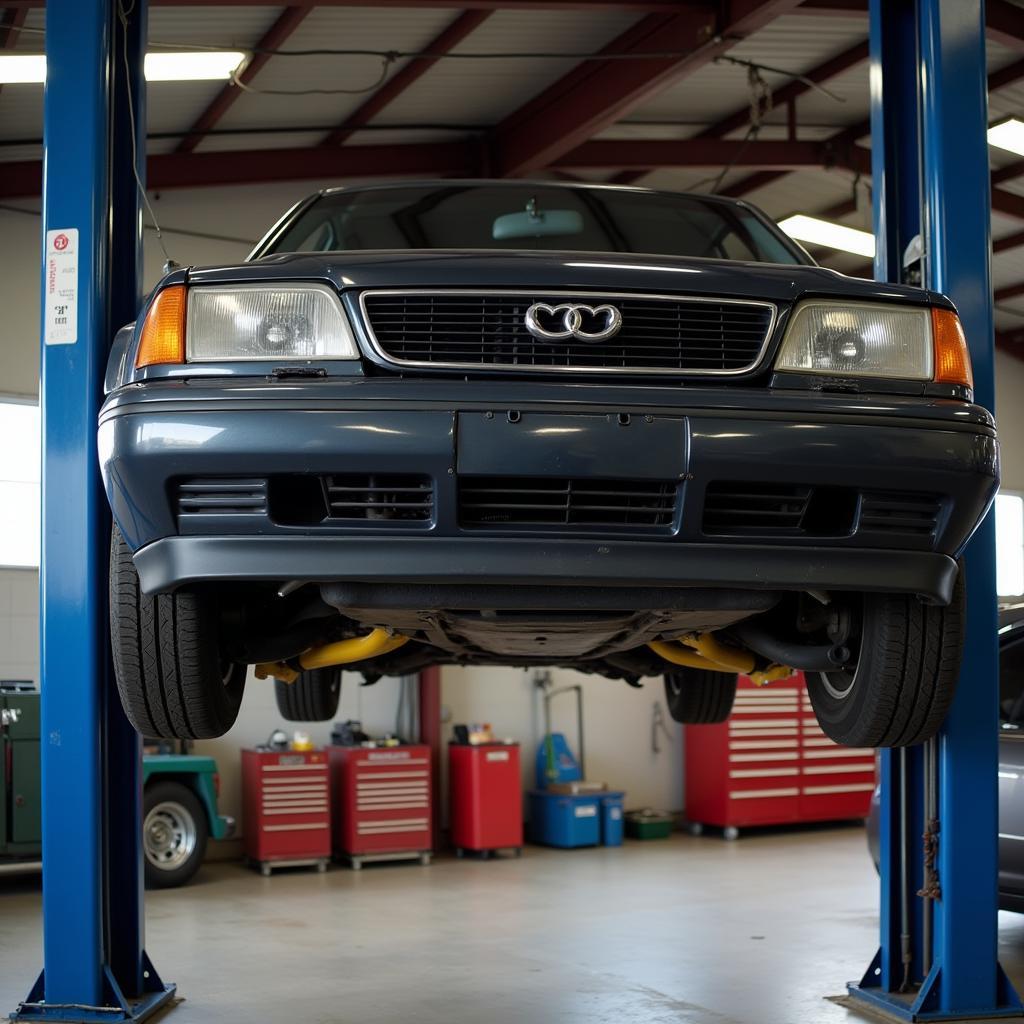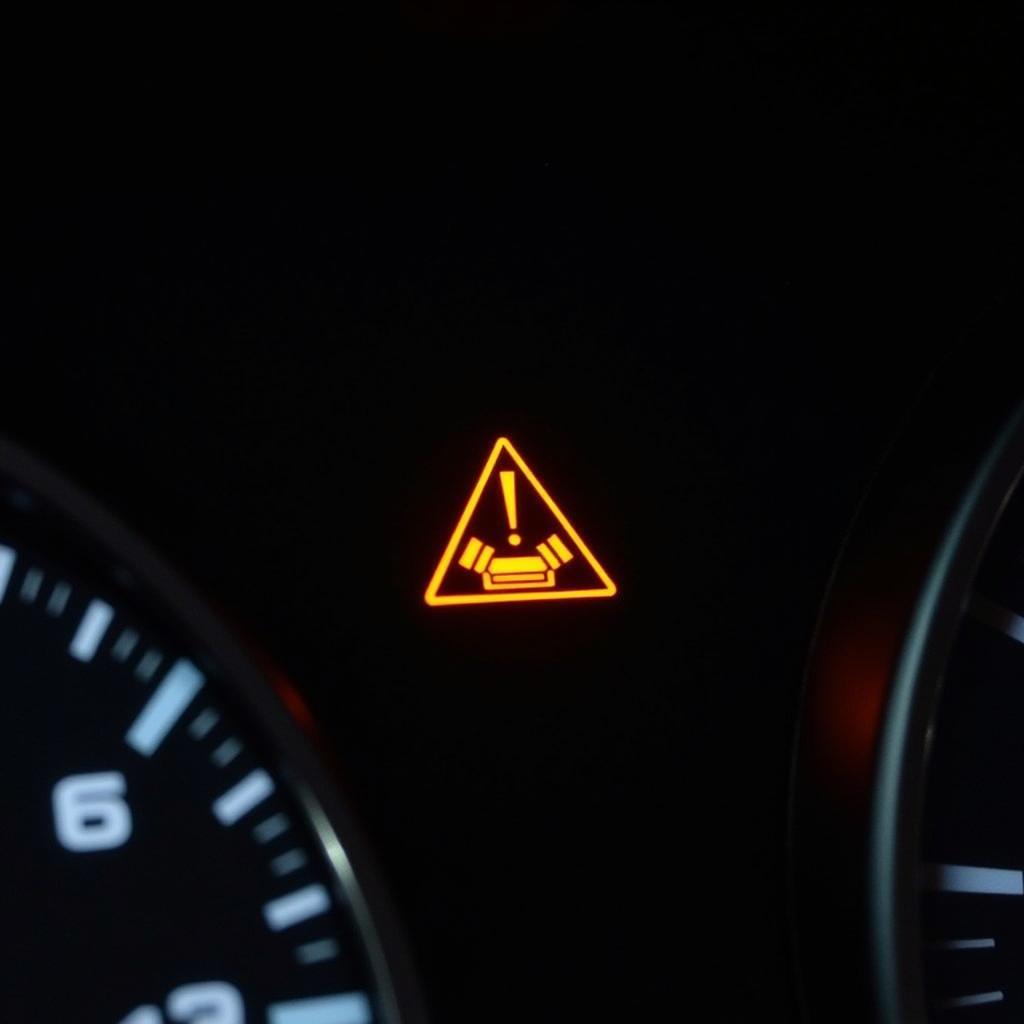The parking brake warning light, often a red circle with a “P” or an exclamation mark inside, illuminates on your dashboard for one crucial reason: to alert you that your parking brake is engaged. While this might seem obvious, understanding the nuances of this warning light can save you from potential car trouble and unnecessary repair costs.
Beyond the Basics: When the Light Means More
While a glowing parking brake light usually indicates an engaged parking brake, there are instances where it signals other underlying issues:
- Low Brake Fluid: A leading cause of parking brake light activation is low brake fluid. Your car’s braking system relies on hydraulic pressure, and insufficient fluid can hinder its performance.
- Faulty Parking Brake Switch: The parking brake switch, responsible for turning the light on and off, can malfunction due to wear and tear or damage. A faulty switch might keep the light on even when the parking brake is disengaged.
- Worn Brake Pads: Though less common, worn brake pads can sometimes trigger the parking brake warning light. This is often accompanied by other warning signs, such as a grinding noise when braking.
- Electrical Issues: Electrical problems, like loose connections or damaged wiring within the parking brake system, can also lead to a malfunctioning warning light.
 Parking Brake Warning Light on Dashboard
Parking Brake Warning Light on Dashboard
Troubleshooting a Persistent Parking Brake Light
If your parking brake warning light stays on even after you’ve disengaged the brake, it’s crucial to address the issue promptly. Here’s a step-by-step guide to help you troubleshoot:
- Check the Parking Brake: Start with the obvious. Ensure your parking brake is fully released. Sometimes, the brake might not be entirely disengaged, even if it feels like it is.
- Inspect Brake Fluid Level: Locate the brake fluid reservoir under the hood and check the fluid level. If it’s below the “minimum” mark, add the recommended brake fluid type for your car.
- Visual Inspection: Examine the parking brake lever, cables, and connections for any visible signs of damage, wear, or loose components. If you notice anything amiss, consult a mechanic.
 Mechanic Checking Brake Fluid
Mechanic Checking Brake Fluid
When to Seek Professional Help
While some parking brake light issues can be resolved with simple troubleshooting, certain situations warrant professional assistance. Contact a qualified mechanic if:
- The light remains on after checking the brake fluid and visually inspecting the system.
- You notice fluid leaks around the brake lines or calipers.
- Your brakes feel spongy or unresponsive.
- You hear unusual noises when applying the brakes.
“Ignoring a persistent parking brake warning light can lead to more serious problems down the line,” warns John Miller, Senior Automotive Engineer at AutoFix Solutions. “Addressing the issue promptly ensures your safety and prevents potential damage to your braking system.”
The Importance of Timely Action
A glowing parking brake warning light, however insignificant it may seem, should never be ignored. Addressing the issue promptly ensures your safety on the road and prevents potential damage to your car’s braking system.
 Car on Lift for Brake Inspection
Car on Lift for Brake Inspection
Remember, a well-maintained car is a safe car. Regular maintenance checks, including brake inspections, are crucial for optimal vehicle performance and your peace of mind.

